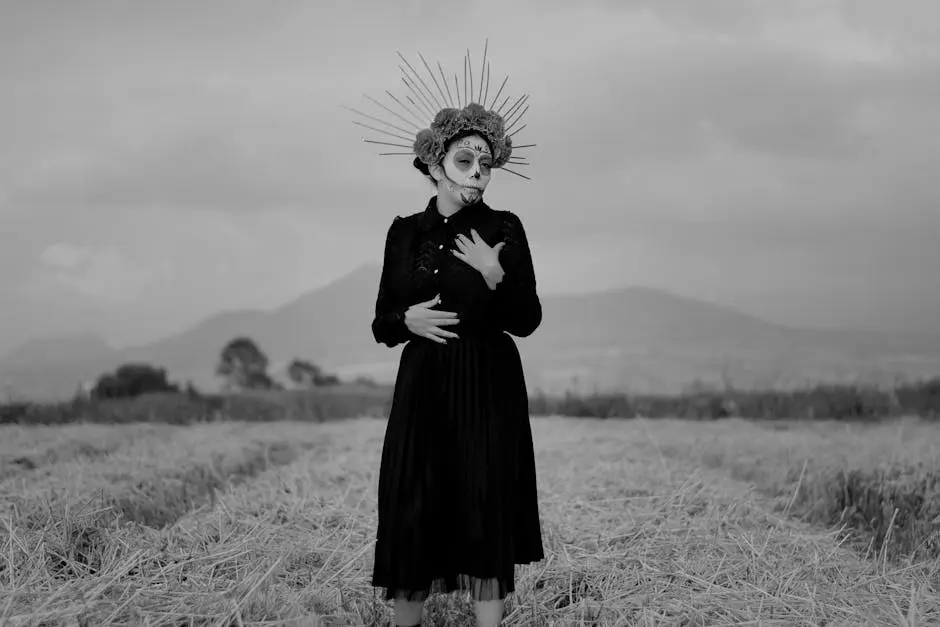15 Unique Memorial Planning Traditions from Around the World
Memorial rituals have been a cornerstone of cultures for centuries, each offering a unique way to celebrate life, mourn loss, and honor legacies. In this blog, we'll journey around the globe to explore some incredible traditions that showcase the diverse ways communities commemorate their loved ones.
1. Sky Burials in Tibet
In Tibet, the practice of sky burials is not only a spiritual offering but a respect for life itself. This sacred tradition involves placing the body on a high hill to be consumed by vultures, symbolizing the soul's return to nature. For Tibetans, this act is a profound form of generosity, offering one's physical remains to sustain another's life form while ensuring that the essence of the departed returns to the earth harmoniously.
Sky burials also involve intricate rituals and prayers performed by Buddhist monks, invoking blessings for the soul's next journey. The practice underscores the Tibetan belief in the transitory nature of life and death, echoing the cycle of samsara, or rebirth, in Buddhist philosophy. This holistic worldview teaches that the act of burial is not just a conclusion but a pivotal moment in a lifecycle that continues beyond the physical plane.
2. Dia de los Muertos in Mexico
A joyful celebration of life and death, Dia de los Muertos honors ancestors with vibrant altars, offerings, and parades. Families visit graves with food, music, and stories, ensuring the spirits of their loved ones are remembered and celebrated. The altars, or 'ofrendas', are adorned with marigolds, sugar skulls, and photographs of departed family members, each item holding a symbolic meaning crucial to the remembered person's life.
The festival is a fusion of indigenous and Spanish traditions, reflecting Mexico's rich cultural tapestry. It challenges conventional views on death by portraying it as a natural, joyous extension of life rather than an end. Through community activities and shared remembrances, Dia de los Muertos serves not just as a tribute but as a festival of cultural pride and continuity.
3. Turning of the Bones in Madagascar
Famadihana, or the Turning of the Bones, is a Malagasy tradition where families exhume the remains of their ancestors for a joyous feast and dance party, believing it expedites their journey to the afterlife. This ceremony takes place every five to seven years, where the deceased are rewrapped in fresh cloth and celebrated with music and dance, reinforcing familial bonds and collective memory.
Participants express their love and respect for the deceased, reaffirming connections that transcend time and physical existence. The tradition exemplifies the belief that ancestors play a continual role in the lives of the living, embodying a philosophy where death is not seen as a disappearance but a transformation, keeping the spirit of family alive across generations.
4. The Cave Burials of the Toraja in Indonesia
In Indonesia, the Toraja people perform elaborate ceremonies and temporarily house the deceased in caves, with effigies carved as a form of honor and protection for the departed. These effigies, known as 'tau tau', are carefully crafted to resemble their human counterparts, serving both as guardians and as a means for the living to remember their loved ones.
5. Celtic Traditions of Samhain
Ancient Celts celebrated Samhain to mark the end of the harvest and the beginning of winter. This festival includes bonfires and divination, honoring the dead as they believed the veil between worlds was thinnest. The modern holiday of Halloween traces its roots to Samhain, where many customs were adapted and transformed over time. It serves as a reminder of the cyclical nature of life, death, and rebirth, an everlasting connection the Celts held with the Earth and its rhythms.
6. Water Burials of the Vikings
Vikings honored their deceased with water burials, sending them off on a longship set aflame, symbolizing a noble journey to the afterlife with royal acclaim. This practice was reserved for nobility and warriors, signifying their status and valor. The sea, a realm of mystery and danger, was seen as a fitting passage, linking the physical world to the spiritual realm where the fallen would join the gods in Valhalla.
7. Ancestral Tablets in China
In traditional Chinese culture, ancestral tablets containing the names and dates of deceased family members are kept in homes or temples, serving as focal points for regular veneration and reverence. This practice reflects the Confucian virtue of filial piety, illustrating the enduring respect for ancestors. Regular rituals performed at these tablets ensure that the spirits of the departed remain integral members of the family, guiding descendants and receiving offerings in the form of food and incense.
8. Ubuntu Philosophy in South Africa
Emphasizing interconnectedness, many South African communities celebrate the spirit of Ubuntu, where elaborate ceremonies embody the belief that a person's life continues to influence and connect loved ones even after death. Ubuntu, meaning 'humanity to others', reinforces the idea that one's legacy lives on through communal bonds and shared histories, deeply engrained in the African ethos of compassion and community unity.
9. Christian All Souls' Day
Observed globally, All Souls' Day is a time for Christians to commemorate all the faithful departed through prayers, masses, and visits to cemeteries. It's a day committed to the remembrance and spiritual welfare of the deceased. The observance represents a connection between the living and the dead, where the power of prayer aids the souls' journey through purification towards eternal peace. This solemn yet hopeful tradition underscores a vibrant theology of death as part of spiritual ascension within Christian faith.
10. Cremation Rituals in Bali
In Bali, cremation is a lavish ceremony that reflects a joyous occasion signifying the soul's liberation and the celebration of eternal life, often involving music, dance, and drama. Known as Ngaben, this ritual is not seen as an end, but a transformation, liberating the soul from earthly ties and allowing it to move towards the afterlife and reincarnation. The elaborate process demonstrates a deep spiritual and cultural commitment, with families saving extensively to ensure a proper and celebratory send-off for their loved ones.
11. The Soul Lanterns of Japan
During Obon, a lantern festival in Japan, families guide ancestral spirits back to the spirit world with floating lanterns, creating a vision of soulful luminosity and respect. This delicate ceremony, accompanied by traditional Bon Odori dances, celebrates the temporary return of ancestors and their legacy. It's a poignant imagery of harmony between the living and their ancestors, highlighting Japan's profound reverence for familial and spiritual connections.
12. Gaan Ngai in India
The Gaan Ngai festival, celebrated by the Zeliangrong community, marks the end of the harvest and honors the dead with vibrant cultural performances and feasts, promoting community spirit and remembrance. The festival serves as a bridge between the living and the ancestors, fostering a sense of continuity and unity nourished by shared cultural and spiritual traditions. Through ritual dances, songs, and rites, Gaan Ngai manifests as a joyful homage to those who have passed, enriching community solidarity.
13. The Momo Challenge in Nepal
A traditional Sherpa custom, where mourning families invite community members to partake in momo, a cherished dumpling meal, to honor the departed and support communal healing. This gathering facilitates shared mourning and healing, strengthening the social fabric among community members. The momo's role transcends its culinary delight, acting as a symbol of togetherness and shared grief, embodying the communal resilience in the face of loss.
14. The Jazz Funerals of New Orleans
A unique blend of celebration and mourning, New Orleans jazz funerals feature a parade led by a marching band, where rhythmic music escorts the deceased, transforming grief into joy. This musical celebration of life serves as a testament to the city's rich cultural heritage, where the somber notes of the dirge transition into jubilant rhythms, reflecting the belief in life after death. It's an expression of community solidarity, honoring the deceased by celebrating their journey and contributions to the living world.
15. Haka Performances in New Zealand
The Haka, performed traditionally among the Māori in New Zealand, is a powerful dance of war and respect, honoring ancestors and capturing the intensity of life and death in its fierce movements. Beyond its modern identity, often seen in sports, the haka is a revered tradition, echoing with powerful chants and synchronized movements that resonate through generations. It captures the spirit of kinship and respect for ancestors, reinforcing the Māori value of looking back to move forward.


